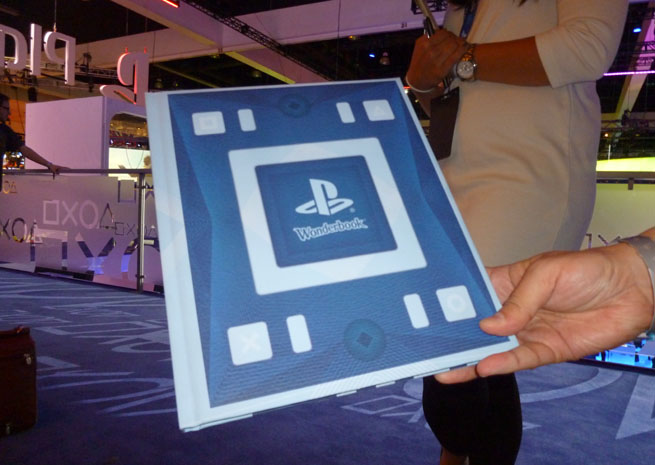One thing people tend to forget about Harry Potter is, between battling monsters, ultimate evil, and fighting in a war between armies of wizards, he spends a lot of time in a classroom. He takes tests. He does homework. He spends years learning to become a wizard. And even though he’s learning extremely cool things, things we’d absolutely love to do, Harry doesn’t really enjoy his education any more than any muggle his age would.
[aditude-amp id="flyingcarpet" targeting='{"env":"staging","page_type":"article","post_id":470618,"post_type":"story","post_chan":"none","tags":null,"ai":false,"category":"none","all_categories":"games,","session":"B"}']Sony’s new Wonderbook peripheral and its first release, The Book of Spells by Potter author J.K. Rowling, wants to change that mindset.
Set in the Potterverse, about 200 years before He-Who-Must-Not-Be-Named started making trouble, Book of Spells casts you as a student in Hogwarts who’s gotten special permission to check out a special book from the restricted area of the library. Through its pages, you learn magic…just like Harry did.
Unlike Harry, kids might actually enjoy taking their lessons.
The Wonderbook itself feels like a solid-though-lightweight hardback book, with stiff cardboard pages inside. The PlayStation Eye camera tracks the augmented-reality tags placed throughout the book, then maps fantasy images on the Wonderbook’s rather plain pages, which you see in real time on your television. The book becomes a magical grimoire, complete with words and pictures that appear on each page as you turn to it. The PlayStation Move motion controller appears as your wizarding wand.
You’re supposed to lay the book on the floor in front of the TV, but you can pick it up and move it around anywhere within the Eye’s range. It also automatically zooms in when you’re interacting with the book, then goes wide to include you whenever you pull items and creatures off its enchanted pages.
Within moments of sitting down for my wizarding lessons, I drew Rowling’s words off the page and into the air above my head, animated birds and trained them on a lazy cat, and detonated a pumpkin. Some spells require a simply swish and flick, while others require tracing specific shapes in the air. Magical dueling also makes up a part of the curriculum.
[aditude-amp id="medium1" targeting='{"env":"staging","page_type":"article","post_id":470618,"post_type":"story","post_chan":"none","tags":null,"ai":false,"category":"none","all_categories":"games,","session":"B"}']
But like any lesson plan, there’s a progression. Jenny Barbour, a producer on the project, calls it the spell journey. “You learn a little bit about the spell, how to say it, how to cast the gesture, and you have a little practice,” says Barbour. Each chapter contains about four spells. “At the end, you have a chapter test where you have to use all four spells to get through a challenge that’s placed before you.”
So no, your kids won’t pick up any info that’ll help get them into college. But they might figure out that learning things and then applying that knowledge feels very cool. And that might help them get into college.
You will detect some latency in the reality-to-screen movement when you wave the wand around, but the mapping still looks pretty smart. I spun the controller in my fingers and watched the on-screen wand turn as well. I even flipped it in the air and caught it several times; on-screen, the wand acted in impressive tandem. And even though Wonderbook has a limited number of pages, it’s possible to close it, select a different chapter or an entirely different book, and then experience an entirely new story when you open it again. “There’s no limit to what you can put into this book,” says Barbour.
With the right content inside it, there might not be a limit to what kids get out of it, either.

